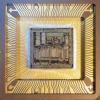-
Posts
77 -
Joined
-
Last visited
Profile Information
-
Gender
Not Telling
-
Location
Copenhagen, Denmark
-
Interests
Music, programming, embedded systems, human languages, branes
Recent Profile Visitors
1,213 profile views
niklasni1's Achievements

MIDIbox Newbie (1/4)
1
Reputation
-
This box looks fantastic and the work you people are doing here to document and make it available is so inspiring.
-
Looks great! Are those Cherry switches?
-
How about being able to not just step forwards, but also repeat, skip, step backwards, etc., using different trigger MIDI notes? Maybe use the velocity/length of triggers to change the velocity/length of the triggered notes. Endless possibilities for algorithmic nonsense!
-
The STM32F7 really needs to be evaluated carefully, it's an interesting chip but it is a much more complicated, dual-issue and caches. I am not however sure the added features (DDR controller, QSPI flash) are so relevant to MIDIBox, unless of course a simple board shows up with a few megabytes of RAM... the dev board I have is very feature-rich, touch screen display and such. I'm sure the F4 is going to be here for a very long time, though.
-
Seriously cool! BTW - if you or someone else need to do this again, here's a board a friend of mine made that uses the 144 pin STM32F407. It has the pads for an SD card reader (connected to the SDIO peripheral - tested sustained reads at 10 mb/s!), USB, and an SRAM chip. You could just not put in the SRAM and have quite a few more GPIO pins, it's all broken out on pinheaders. As an added bonus, unlike the Discovery boards, the GPIOs are laid out in order here, so no hunting around to connect consecutive GPIOs! There's no MIOS port, but it's basically the same as the Discovery just with the bigger chip and without the external audio stuff, should be easy to adapt. We had a couple made and assembled them by hand and I've used it for a few non-permanent things, and it works fine. Kicad files here: https://github.com/knielsen/pcb_stm32f4_sram
-

TekkStar - Midification of a Tama Techstar 306
niklasni1 replied to Phatline's topic in MIDIfication
Very nice!- 18 replies
-
- TekkStar
- Midifcation
-
(and 2 more)
Tagged with:
-

Building a Sample-Based Synthesis MIDI Module
niklasni1 replied to onlinejb's topic in Design Concepts
http://www.midibox.org/dokuwiki/doku.php?id=midibox_sd_card_sample_player -

Building a Sample-Based Synthesis MIDI Module
niklasni1 replied to onlinejb's topic in Design Concepts
There's already a MIDIBox project that plays samples. The basic features are there in the hardware already, but there's not much in the way of synthesis (envelopes etc). The main limitation is the speed of the storage device - the SD card attached over SPI won't do more than a few voices as it's currently set up. You could make a different MIDIBox core board that uses the 4 bit mode for the SD card, which is quite a bit faster but apparently hard/impossible to use with the peripherals on the STM32F4 Discovery board. If you're that comfortable with electronics, you could make a board with any ARM Cortex M SoC with an external static memory interface (that's most of them AFAIK) and attach some Flash and an audio codec and port the MIOS software to it. That's not a weekend project, but certainly doable. -
Interesting. PIC-based?
-
Which core board do you have? Try flashing the bootloader again like when you first installed it and then uploading the app that matches your core.
-

MMC? (Or, external transport control with the Seq as timing master)
niklasni1 replied to niklasni1's topic in MIDIbox SEQ
No, I think it's fine like this. The other board is definitely broken -- can trigger timing glitches by sending lots of notes using the note repeat in the Akai, sometimes up to a 30 BPM drop. Good thing I had a good one to test! I'd still like to make the transport buttons on the controller to work, somehow. Maybe just make normal start/stop messages work in MIDI clock master mode. -

MMC? (Or, external transport control with the Seq as timing master)
niklasni1 replied to niklasni1's topic in MIDIbox SEQ
Hm, I tried a different Discovery board and it's better. Swings between 120.0-120.4 BPM with the Akai set to 120 when connected over USB. Maybe the other one is a dud. -

MMC? (Or, external transport control with the Seq as timing master)
niklasni1 replied to niklasni1's topic in MIDIbox SEQ
MIDI input working! If I connect the Akai to the computer and internally loop the clock to the Akai's own DIN output and connect that to the DIN on the Seq, sync is much better. Over USB it'd swing maybe 10 bpm as displayed on the display, now it was wobbling 1/10th of a BPM as displayed. -

MMC? (Or, external transport control with the Seq as timing master)
niklasni1 replied to niklasni1's topic in MIDIbox SEQ
OK, I'll try soldering on a MIDI input.


